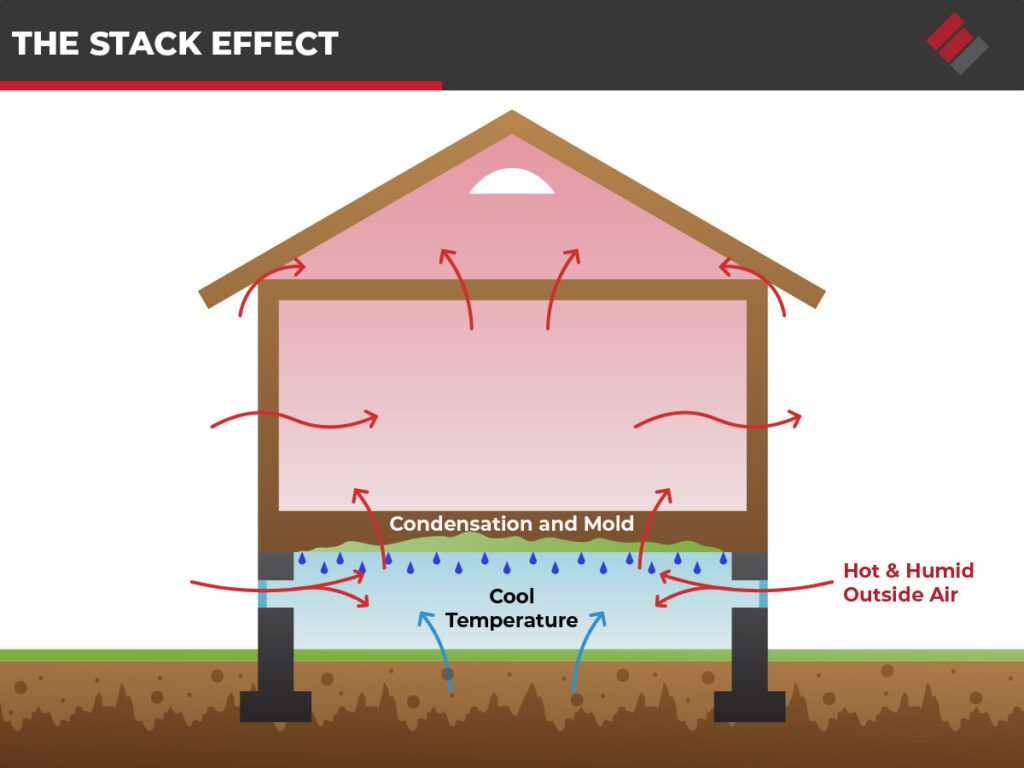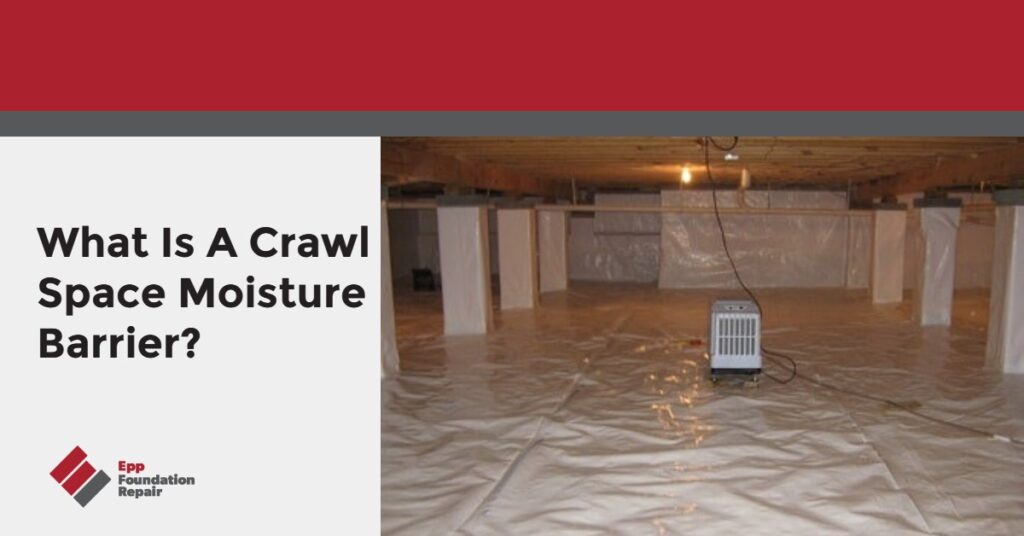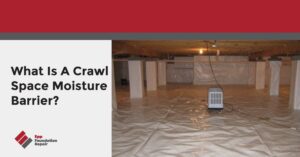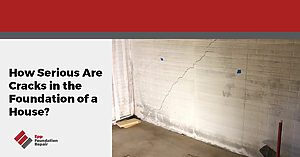If you’re looking for information about a crawl space moisture barrier, this article has what you need. We’re going to talk about why you don’t want moisture in your crawl space, how a crawl space moisture barrier can help, why you’ll probably need more than a crawl space moisture barrier if you want to protect the crawl space, and more.
What Is A Crawl Space Moisture Barrier?
A crawl space moisture barrier is a piece of thick plastic placed over the dirt floor in a crawl space to prevent water vapor in the soil from entering the crawl space.
We consider a crawl space moisture barrier to be the bare minimum solution. Yes, it does slow down water vapor in the soil from getting into the crawl space. However, water vapor in the soil isn’t the only source of moisture in a crawl space. Moisture can enter a crawl space from another source, such as a leaky pipe or poor drainage around the foundation. This is why we don’t recommend a crawl space moisture barrier by itself as a way to keep a crawl space dry. A crawl space moisture barrier should almost always be used with a drain tile system. We’ll talk more about how drain tile systems work in just a bit.
Why You Don’t Want Moisture In Your Crawl Space
You don’t want moisture in your crawl space because moisture in your crawl space will cause problems inside your home. Let’s start with air quality…
Some of the air in the crawl space travels up into your home’s living area via the stack effect:

If your crawl space is full of mold, the air in the crawl space will be as well. When that air travels up via the stack effect, the air in your home’s living area will also contain mold spores. This could lead to allergies and other respiratory problems for anyone living in the house.
Moisture in a crawl space can also cause damage to the crawl space itself, including wood rot leading to structural damage and insulation deterioration. Moisture also attracts pests, some of which eat wood and others that leave dangerous droppings behind.
How Does Moisture Get Into A Crawl Space?
Moisture gets into a crawl space in various ways, including:
- Through the dirt floor – There’s always a certain amount of moisture in soil. If there’s poor drainage around the foundation or a high water table, the ground in the crawl space will be even wetter.
- Through a cracked foundation wall – Poor drainage around the foundation can cause hydrostatic pressure to build up in the soil. Hydrostatic pressure is powerful enough to push water through minor cracks in a foundation wall. You might not even know those cracks are there until your crawl space gets wet.
- Leaky plumbing – Pipes can also leak water into a crawl space.
- Through open vents – When hot, humid air enters a crawl space through open vents, it condenses on cooler surfaces, creating moisture.
A Crawl Space Moisture Barrier Is Probably Not Enough
If you want a dry, clean crawl space, a crawl space moisture barrier alone is probably not enough unless you live in an arid area. Here’s the reason why:
A crawl space moisture barrier cannot solve a drainage problem around the foundation, which is often the source of the excess moisture in the crawl space. A crawl space moisture barrier by itself just stops some moisture from the crawl space’s dirt floor. If poor drainage around the foundation is the source of moisture in the crawl space, there’s no point in laying down a crawl space moisture barrier unless you solve the drainage problem first.
How To Waterproof A Crawl Space The Right Way
The best way to waterproof a crawl space is to…
- Get the drainage problem under control by installing a drain tile system.
- Encapsulate the crawl space.
- Install a dehumidifier in the crawl space.
Let’s take a look at each one:
Get the drainage problem under control by installing a drain tile system
A drain tile system prevents excess moisture from building up in the soil around the foundation. Excess moisture in the soil flows into a perforated drainage pipe and gets channeled toward a sump pit. When the sump pit fills with water, a sump pump kicks in and expels the water away from the foundation. When it comes to waterproofing, nothing beats a drain tile system.
For more information on how drain tile systems work, see How Does A Drain Tile System Work?
Encapsulate the crawl space
Crawl space encapsulation involves covering the floor and walls of the crawl space with a thick, plastic vapor barrier, so the dirt floor is completely sealed off.
For more information about crawl space encapsulation, see Is Crawl Space Encapsulation Worth It? Yes!
Install a dehumidifier in the crawl space
Finally, we recommend adding a dehumidifier to the encapsulated crawl space to ensure the air in the crawl space stays dry. For more information about dehumidifiers in a crawl space, see Don’t Install A Crawl Space Dehumidifier Without Encapsulation.
Benefits Of A Clean, Dry Crawl Space
The benefits of a clean, dry crawl space include:
- Improved air quality – When your crawl space is mold-free, the air flowing up from the crawl space into your home’s living area will be mold-free as well.
- Possible savings on energy bills – We don’t guarantee it, but some of our customers have reported lower energy bills after encapsulating their crawl space. This is possibly because decreased humidity in the crawl space means reduced humidity in the home’s living area.
- Avoid pest infestation – Pests like damp crawl spaces.
- Makes your home easier to sell – Wouldn’t you prefer to buy a house with a clean, dry crawl space?
- Increases your home’s value
- Provides a space to store things like holiday decorations and tools
- Protects your hardwood floors – Mold and humidity in your crawl space can affect a wood floor above the crawl space.
Signs Of Excess Moisture In A Crawl Space
Signs of excess moisture in a crawl space include the following:
- Pooled water on the crawl space’s dirt floor
- Muddy floor
- Wood rot
- Efflorescence
- A musty odor in the crawl space and possibly in your home’s living area
- Allergies and respiratory problems
- Pest infestation
- Moldy wooden floors or baseboards
- Visible mold in the crawl space
- The wood floor above the crawl space is warped.
If you’re thinking about a crawl space moisture barrier for your home and are in our service area in Nebraska, Iowa, Kansas, and Missouri contact us today for an inspection and estimate.







